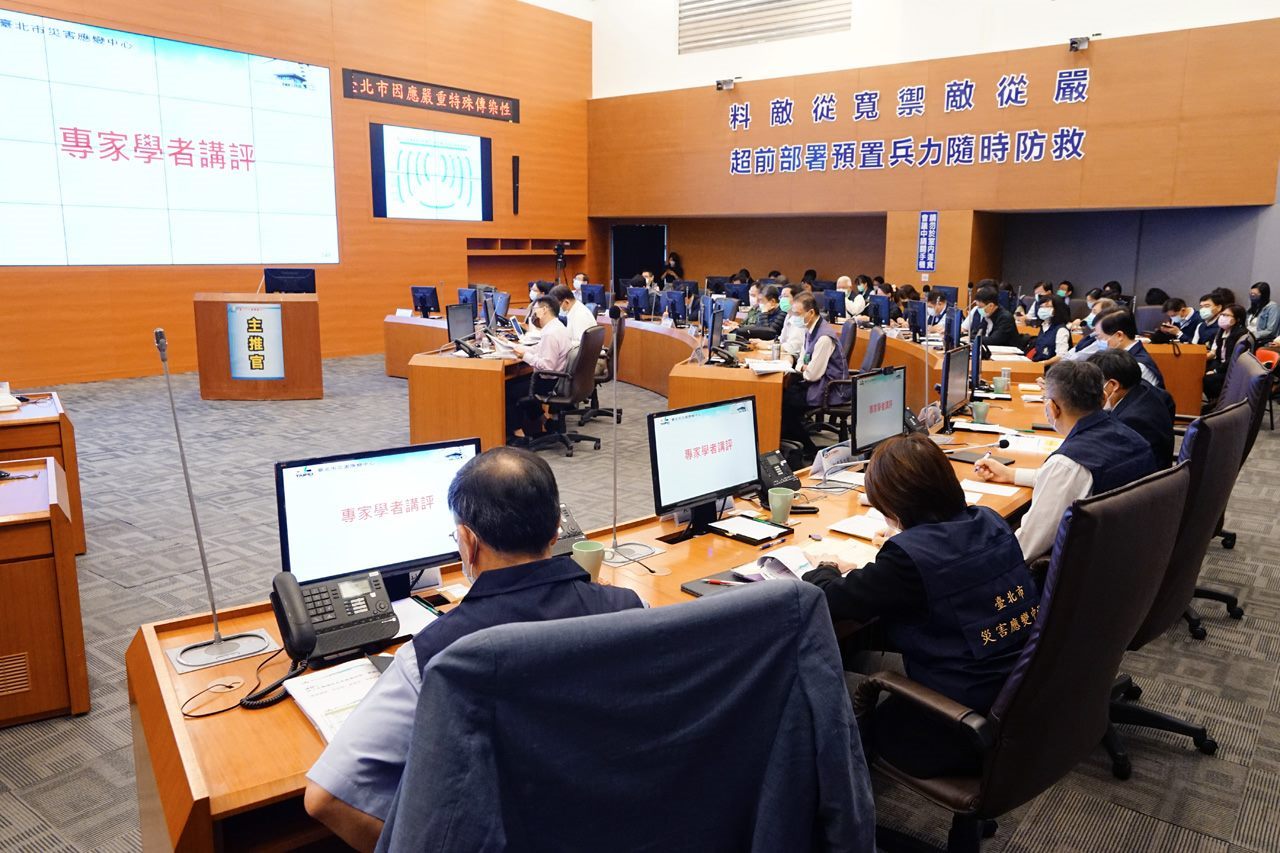City Conducts Pandemic Drill to Test Outbreak Preparedness
 Mayor Ko Wen-je kicked-off a pneumonia outbreak management drill at the City’s Emergency Operation Center on April 30.
Mayor Ko Wen-je kicked-off a pneumonia outbreak management drill at the City’s Emergency Operation Center on April 30.
The scenario depicts an imported case resulting in a community cluster outbreak, which saw an alarming spike in the number of patients while the source of contagion remains unknown. In response, the Centers for Disease Control instructed Taipei to implement tougher measures. The exercise spanned 3 phases and covered 23 topics. The drill lasted 2 hours.
In addition to all city government agency heads, participants also include central government officials from the Ministry of Transportation and Communications, Ministry of Health and Welfare, Council of Agriculture, Centers for Disease Control, and National Fire Agency, as well as members from the military’s 33rd Chemical Warfare Group and Taipei City Reserve Command. There were also experts from National Taiwan University and NTU Hospital at the center.
The mayor stressed that there are two key factors in disease prevention logic: border protection and internal control. He pointed out that Taiwan does a pretty thorough job with internal control – despite several imported cases, the tight control makes it hard for the virus to spread. At the same time, the public have a high level of disease awareness and preventative measure understanding; most people put on face mask before leaving home, even before the government made it mandatory to wear it on public transportation. That is why, with the exception of an initial spike due to imported cases from returning expats early on, Taiwan has kept the curve under control.
Regarding the 116 cases in Taipei, he explained that among these, 107 are imported, 1 case from the Panshi-class combat ship, and 8 locally-acquired cases. However, he stressed that this is the era of the globalization, so unless the country completely closes its borders, any additional case imported from abroad always have the risk of starting an outbreak.
Regarding the drill, the mayor explained that the purpose is to use the practice as an opportunity to train related personnel on the various degrees of response which may be implemented based on different levels of outbreak. He emphasized that providing a large amount of care is not the best cure – the best approach is to administer what is deemed appropriate. The drill allows the City to strengthen its preparedness for a pandemic, since the number of patients will determine how much load the local medical care system can handle without breaking. He remarked that the city government will devise the scope of control depending on outbreak severity.

![Taiwan.gov.tw [ open a new window]](/images/egov.png)
